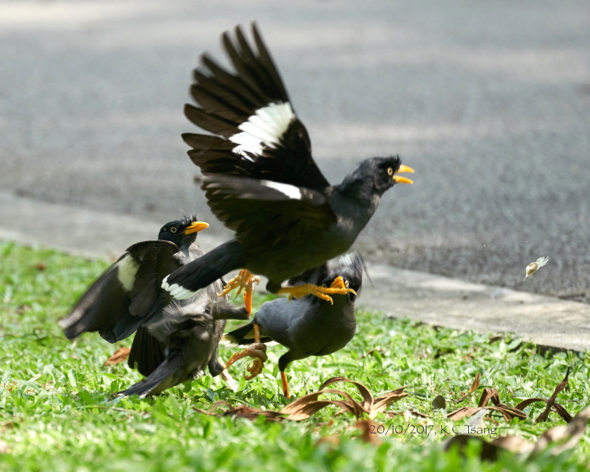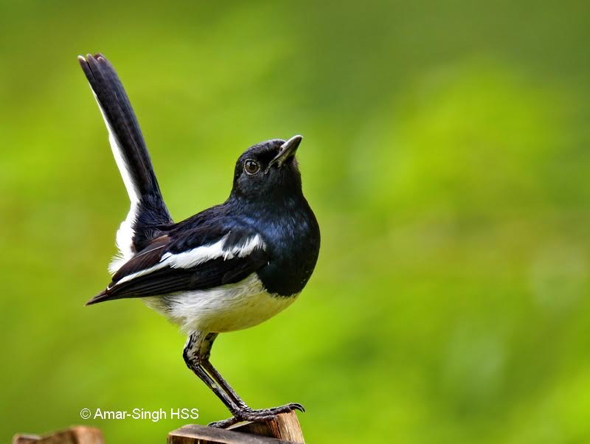
“I cannot comment about the African Sacred Ibis (Threskiornis aethiopicus), but since this website drew my attention to the matter, I have been observing local mynas for the last 10 years. And yes, I can state categorically that the Javan Myna (Acridotheres javanicus) (above) does displace the Common Myna (Acridotheres tristis) and the Straits Robin, also known as Oriental Magpie-robin (Copsychus saulari).

“I used to maintain a number of aviaries. Every morning, when feeding the birds, I would give the previous day’s leftovers to wild birds. Common Mynas were, well, common when I started this practice more than 40 years ago (above).
“In the last 10 years I have noticed a steady decline in their population, and in the last two years I have hardly seen any – perhaps one every three or four months. But there are hordes of Javan Mynas.
“When the two species were still present in about equal numbers, I noticed that the Javan was more bold, and willing to come closer to humans to take food. In fact, it was not difficult to get wild birds to come to the hand for mealworms.
“The Common Myna on the other hand, is more circumspect. However, when food was tossed to the birds, I found that Common Mynas could hold their own and even fight off their Javan cousins.

“As for Oriental Magpie-robins (above), their population in Singapore has declined tremendously. Whether this is due to poaching, habitat change, or competition from various mynas, I cannot say specifically.
“But I do know that magpie-robins are birds that frequent large suburban gardens and feed off grasshoppers. Both are extremely rare in Singapore today. 50 years ago I could sweep a butterfly net over expanses of grass and collect enough insects to feed my birds. Due to extensive chemical fogging today, any kind of insect is rare, even in my garden, which has been specifically set up with plants to attract them. The magpie-robins could simply have starved to death.”
Lee Chiu San
Singapore
25th January 2019
This comment post can be viewed HERE.









One Response
I live in the Thomson area. On a psf basis, my house is probably the most densely planted even though the plot size is less than the average. I am pleased that the Oriental Magpie Robins often come to my place. Their sounds are so melodious and loud but such a welcome compared to the raucous calls of the kingfishers, or the annoying Large Tailed Nightjars.